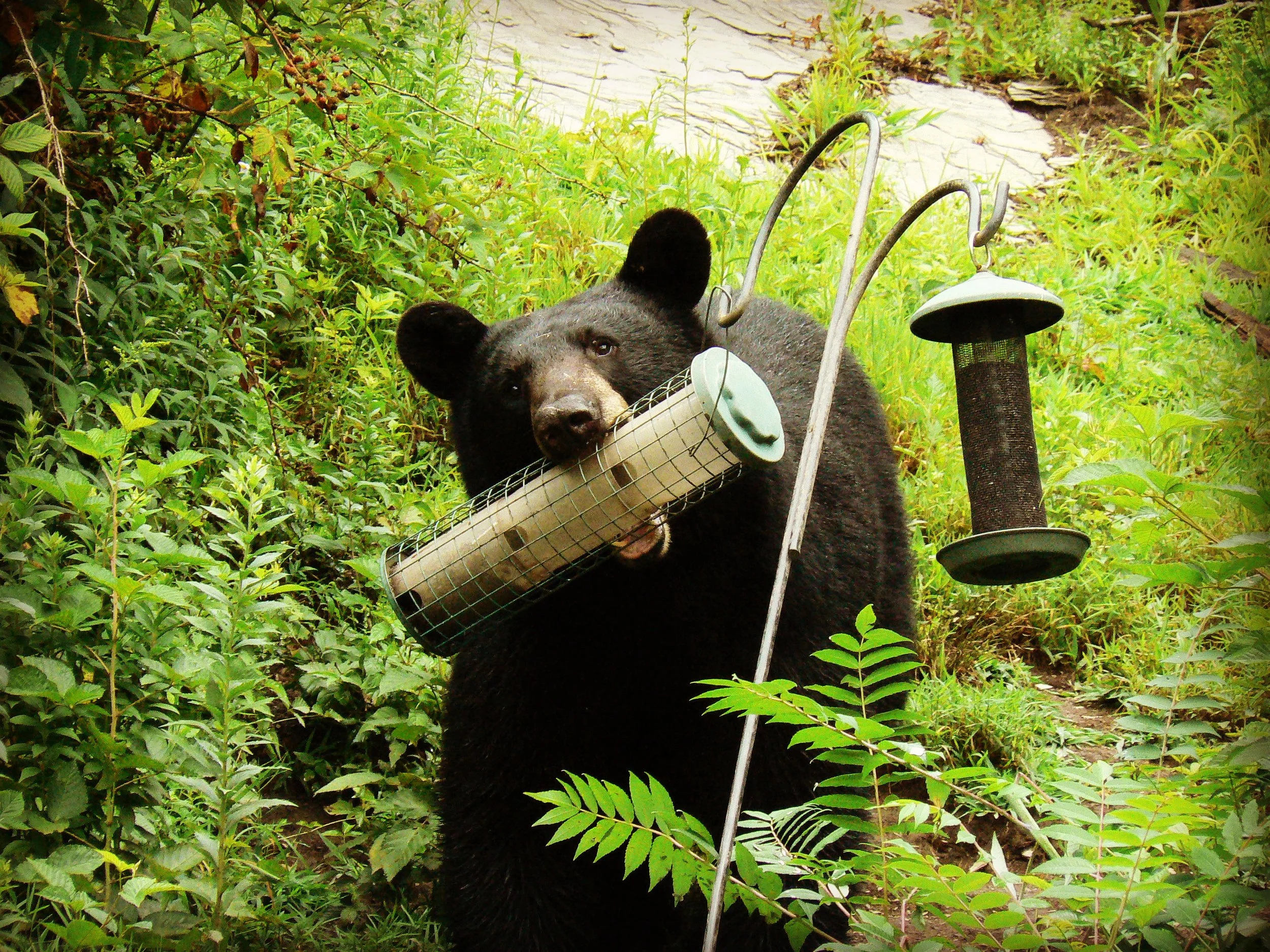It’s that time of year: Tips on living with bears
June 25, 2022 | By Waterbury RoundaboutBird feeders, compost, and unsecured garbage can attract bears closer to humans and increase chances of conflicts. Vermont Fish & Wildlife photo
Vermont’s black bears are making their summer rounds looking for easy meals and prompting the folks at the Vermont Fish and Wildlife Department to issue their annual tips on how people can safely coexist with bears.
The most important thing to remember, the wildlife experts say, is that both bears and people are at risk when bears spend time around humans.
That’s the message from state bear project leader Jaclyn Comeau. “Every time a bear finds an easy meal of birdseed, compost or unsecured garbage, they are learning a dangerous association between people and food,” she said. “Coexisting with bears starts with Vermonters taking proactive steps to help keep bears wild.”
The Fish & Wildlife Department estimates that Vermont is home to 4,600 to 5,780 black bears, almost four times the state’s estimated bear population of 1,200 to 1,500 in 1975.
Habitat loss, earlier spring weather due to climate change, and increasing human development that encroaches into remote areas all mean that bears and people are bound to cross paths.
Potential food sources for bears include birdfeeders, compost, or unsecured garbage that bring bears closer to humans and increase the chances of conflicts. To avoid run-ins with bears, state wildlife experts offer suggestions:
Take down bird feeders until December. Attract birds by planting bird-friendly native plants instead. One resource is Audubon’s Native Plants for Birds Program.
Store garbage in a secure structure and a bear-proof container. The department’s website has instructions for bear-proofing a garbage container.
Don’t put trash out for collection until the morning of pick-up.
Get bear-proof dumpsters in your community.
Compost responsibly using steps for composting in bear country on the department’s website. In general, follow the ratio of three parts brown materials to one part kitchen scraps, turned frequently; keep it in a sturdy tumbler or bin.
Use electric fencing to keep chickens and bees safe. Details online from the state’s guidance for bear-proofing chicken and bee enclosures.
Clean outdoor grills after every use.
Shoo bears from your yard by yelling, banging pots and pans, or using other noise devices from inside the house. Never shoot at a bear to scare it. Even BBs can seriously injure bears.
Finally, wildlife officials ask Vermonters to report bear encounters to Vermont Fish & Wildlife. Use the black bear incident report tab on the department’s website or contact your local game warden. Information from reports is helpful to game wardens and biologists.

